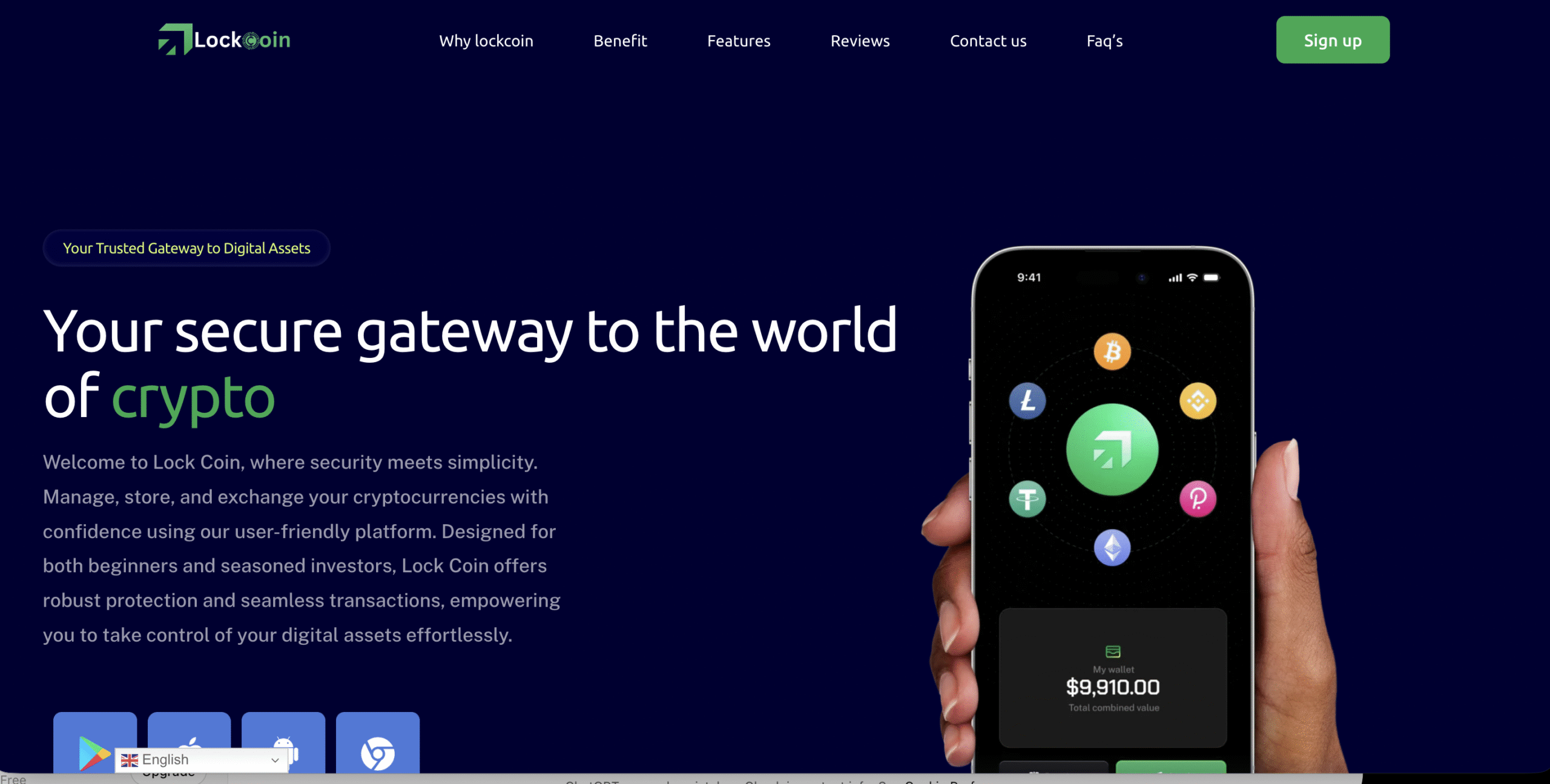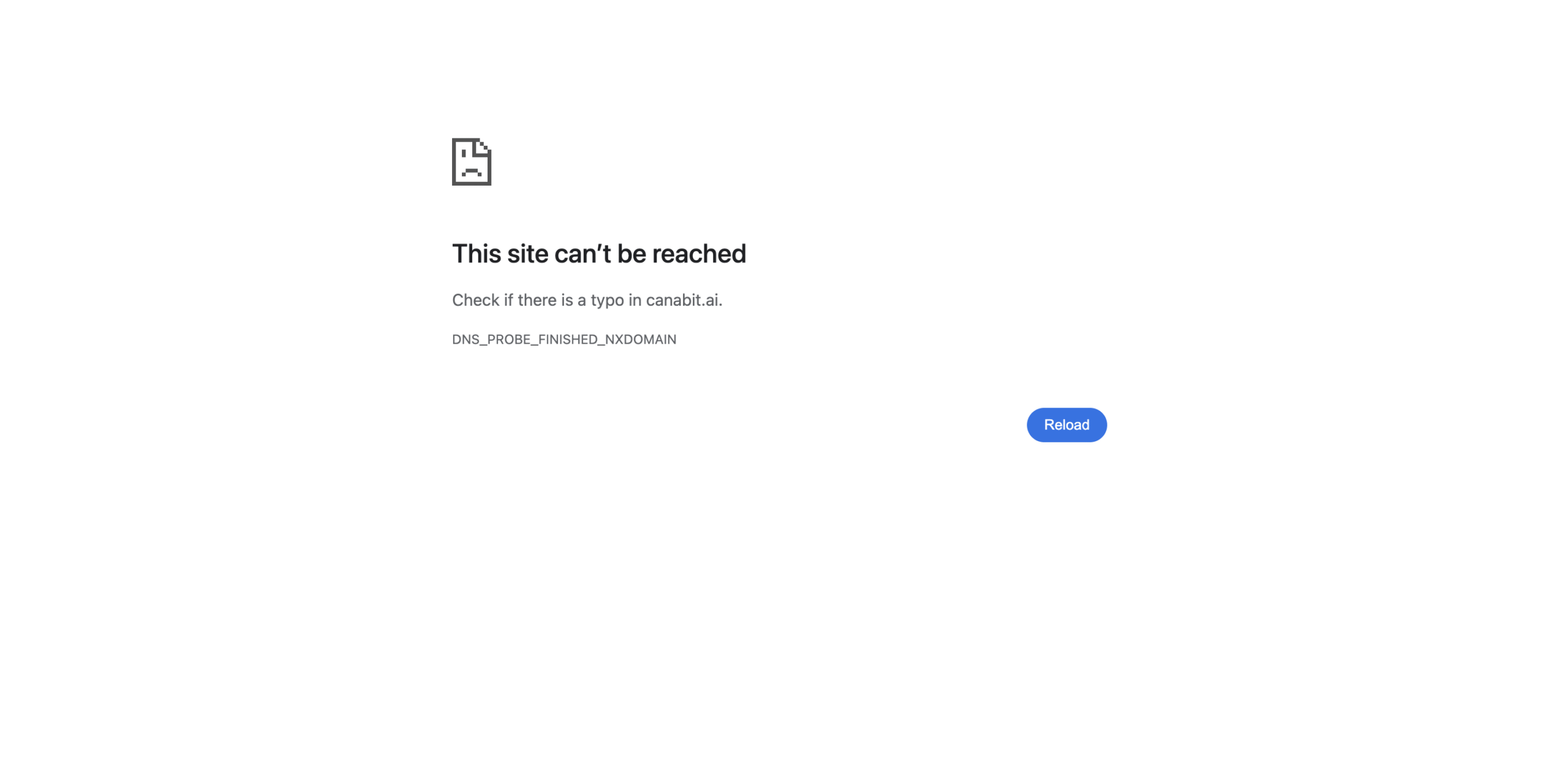Cryptocurrency has become one of the most exciting and fast-moving spaces in modern finance. Unfortunately, it’s also a world where scammers exploit the complexity of blockchain technology and the promise of quick profits. Among the growing list of deceitful platforms that have recently surfaced, LockCoin.net stands out as a particularly convincing but ultimately fraudulent operation.
This detailed review exposes how the platform operates, the warning signs many missed, and what the overall pattern tells us about how crypto scams continue to evolve.
1. What Is LockCoin.net?
At first glance, LockCoin.net looks like a legitimate cryptocurrency investment platform. It presents itself as a high-tech exchange and trading service offering users access to advanced market tools, automated trading bots, and high-yield investment plans. The website features sleek visuals, live market data, and professional marketing copy—everything you’d expect from a credible fintech startup.
However, appearances are deceiving. The LockCoin.net domain is not associated with any regulated entity or verified company. The operation behind it appears to be anonymous, with no public information about its management team, corporate registration, or licensing. The combination of glossy presentation and complete lack of transparency is the first major red flag.
2. The Name Confusion: Borrowing Legitimacy
“LockCoin” as a term isn’t new. Years ago, a legitimate academic project under the same name explored bitcoin privacy protocols. This has led to confusion because the scammers behind LockCoin.net have capitalized on that association to appear more credible.
To an unsuspecting investor, the name “LockCoin” might sound familiar and technically sophisticated, adding an illusion of legitimacy. But the LockCoin.net website has no connection to that earlier research or any reputable blockchain project. It’s a textbook case of brand hijacking—a tactic where scammers reuse trusted names or industry terminology to mislead newcomers.
3. How LockCoin.net Operates
Victims of the LockCoin.net scam have consistently described the same pattern of events. The process is carefully structured to gain trust, encourage deposits, and then trap users when they attempt to withdraw.
Step 1: Building Trust
When a new user signs up, they’re greeted by a polished dashboard and what appears to be live trading data. A representative or “advisor” may reach out via email, Telegram, or WhatsApp, guiding them through the platform and encouraging a small initial deposit. Some early users are even allowed to make small withdrawals successfully, which helps reinforce trust.
Step 2: Encouraging Larger Deposits
Once the victim feels comfortable, the platform begins promoting “premium” accounts, trading bots, or advanced plans that promise extraordinary returns—sometimes up to 10% daily or more. Users are told that increasing their deposits will “unlock” higher profit margins or grant access to new investment tiers. The marketing is persuasive, leveraging both greed and fear of missing out.
Step 3: The Withdrawal Trap
The scam becomes obvious when victims attempt to withdraw their funds. Initially, the platform might show the transaction as “pending.” Then, a support representative claims there’s an issue—such as account verification, liquidity requirements, or pending compliance checks. Victims are told to pay additional fees or deposits to “release” their funds.
These payments are, of course, never returned. Once the scammers extract as much money as possible, communication stops completely. The support email becomes unresponsive, and the victim’s account may be suspended or erased altogether.
4. Key Red Flags
While LockCoin.net looks convincing, a closer examination reveals numerous warning signs that many investors unfortunately overlooked:
-
No Verified Business Information: There’s no registered company behind the platform. No legal address, no phone number, no license information.
-
Anonymous Operators: The domain registration is hidden behind privacy protection services—common among scam operations.
-
Unrealistic Promises: The platform markets returns that are mathematically impossible in legitimate markets.
-
Payment in Crypto Only: Legitimate investment firms accept multiple payment methods. Scams often insist on crypto because transactions are irreversible.
-
Poor Customer Service: Communication vanishes once victims start questioning withdrawals.
-
Fake Endorsements and Testimonials: Many “user reviews” on the website appear copied or generated, often using stock photos or generic text.
Every one of these indicators alone is suspicious; together, they confirm a coordinated fraudulent setup.
5. The Psychological Playbook Behind the Scam
The success of LockCoin.net lies not just in technology but in psychology. The operators understand human behavior deeply—especially the blend of hope and greed that drives many into speculative investments.
Trust Through Design
The website’s interface is clean, data-rich, and modern. Real-time market charts and active dashboards simulate the appearance of a functional exchange. Scammers know that users associate technical complexity with authenticity.
The Illusion of Control
Victims are given dashboards showing growing balances and “profits.” These numbers are fabricated, designed to keep users emotionally invested. The more the on-screen balance grows, the harder it becomes for the user to accept they’ve been deceived.
Manipulative Communication
Support agents often pose as friendly investment coaches or account managers. They build rapport and use emotional triggers—flattery, urgency, or even sympathy—to keep victims engaged. Once trust is established, the push for larger deposits begins.
6. The Escalation Cycle
LockCoin.net doesn’t simply take a user’s money once—it aims to extract as much as possible over time. The cycle often looks like this:
-
Initial Deposit – A small amount, usually under $500, to test the system.
-
Apparent Profit – The fake dashboard shows quick gains, encouraging more investment.
-
Larger Deposit – Users add thousands more after seeing “profits.”
-
Blocked Withdrawal – Withdrawal attempts are frozen due to supposed “account issues.”
-
Fee Demands – The user is told to pay “unlock” or “verification” fees.
-
Final Disappearance – Once the victim refuses further payment, contact is severed.
This pattern mirrors that of dozens of crypto fraud sites operating under different names. The scripts and tactics are often identical, suggesting the same group or network runs multiple scams simultaneously.
7. The Deceptive Appearance of Legitimacy
LockCoin.net uses visual and linguistic cues that make it appear professional. From a design perspective, the site could easily be mistaken for a small but legitimate fintech startup. The scammers make heavy use of buzzwords like “blockchain integration,” “AI-powered trading,” and “decentralized finance.”
There are also pages describing compliance with “KYC” and “AML” laws—complete with copied text from real regulations. None of it holds up under scrutiny. The supposed regulatory claims are vague and unverifiable, with no links to any actual oversight authority.
This “borrowed legitimacy” approach is a hallmark of online financial fraud. By combining technical jargon with a sleek presentation, scammers successfully bypass the skepticism of even moderately experienced investors.
8. Common Victim Experiences
People who interacted with LockCoin.net have shared strikingly similar experiences:
-
Account Balances Frozen: After deposits, funds appear to grow but cannot be withdrawn.
-
False Hope: Victims are told that the issue is temporary or that a small fee will fix it.
-
Emotional Manipulation: Agents become defensive or aggressive when questioned.
-
Disappearing Support: After repeated failed withdrawal attempts, communication stops entirely.
-
Duplicate Platforms: Victims later discover that the same operators rebrand and launch new websites under different names.
These shared stories paint a consistent and troubling picture of systematic deception.
9. Why So Many Fell for It
LockCoin.net’s success as a scam stems from its professional execution. Unlike older, clunky fraud sites, this one was sophisticated enough to pass as legitimate. The following factors contributed to its effectiveness:
-
Timing: The site appeared during a period of renewed crypto hype, when public interest and prices were rising.
-
Social Proof: Fake testimonials and Telegram groups provided the illusion of community trust.
-
Micro Successes: Early test withdrawals built confidence and lowered users’ defenses.
-
Personalized Communication: Support agents addressed users by name and maintained ongoing relationships.
All of this created a psychological environment where skepticism faded and greed took over.
10. The Broader Pattern of Crypto Scam Platforms
LockCoin.net is not an isolated incident. Over the last few years, hundreds of similar websites have emerged and disappeared, each following nearly identical patterns. Many are clones, sharing the same website templates, dashboard design, and scripts. When one site gains too much attention or negative publicity, the operators simply register a new domain and start again.
This cycle highlights the need for better consumer awareness and stronger online due diligence. The ease with which scammers can replicate a professional-looking investment platform makes it essential for users to verify every claim before investing a cent.
Report LockCoin.net scam and Recover Your Funds
If you have lost money to LockCoin.net, it’s important to take action immediately. Report the scam to LOSTFUNDSRECOBERY.COM, a trusted platform that assists victims in recovering their stolen funds. The sooner you act, the better your chances of reclaiming your money and holding these fraudsters accountable.
Scam brokers like LockCoin.net continue to target unsuspecting investors. Stay informed, avoid unregulated platforms, and report scams to protect yourself and others from financial fraud. Read More reviews at Scams2Avoid



